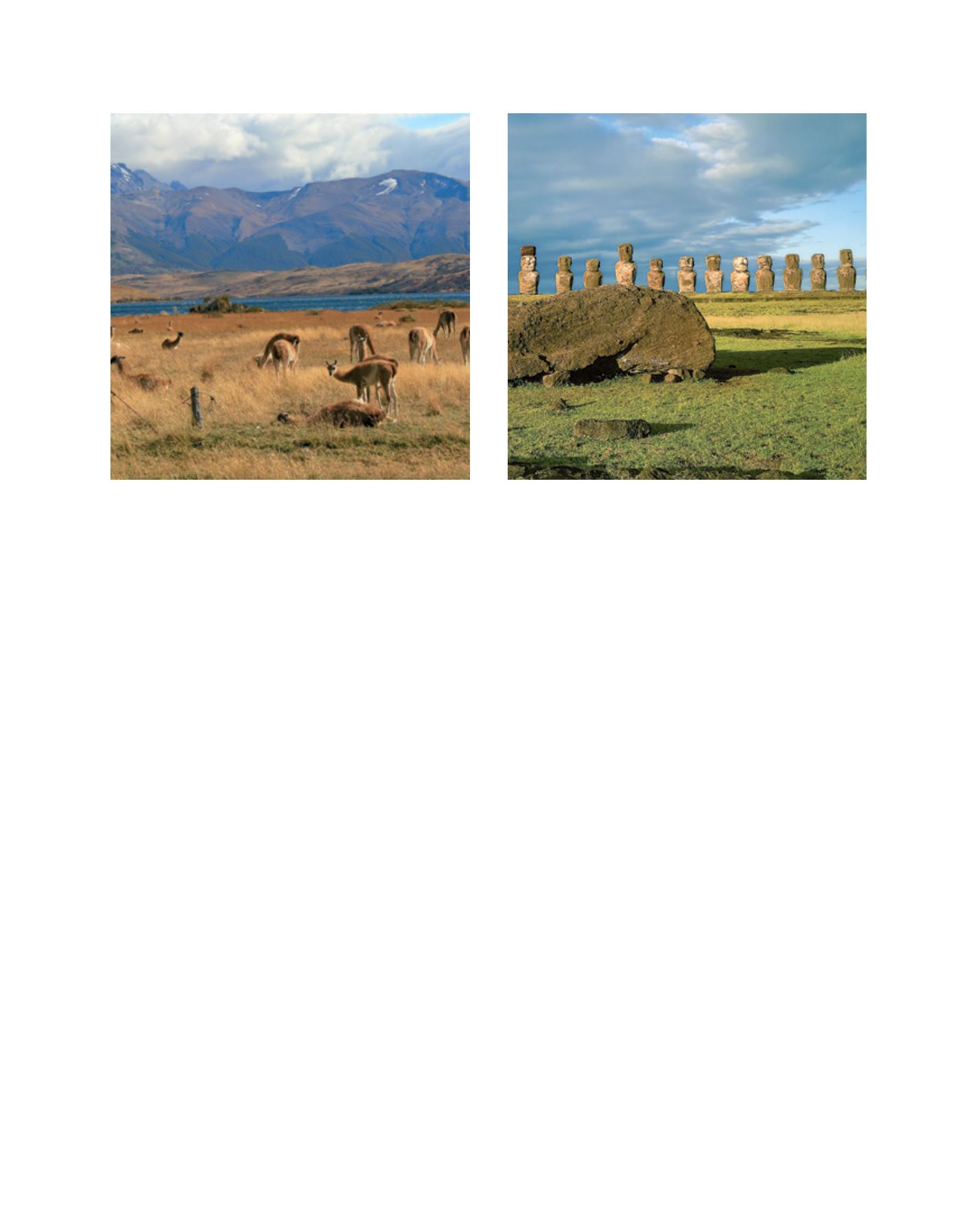

[
] 75
native forest restoration, and especially Law No. 19.561/1998
on forest support for the restoration of degraded land and
land under desertification processes, which was included as a
goal in PANCCD-Chile. These legislations have provided ‘net
zero deforestation’ in Chile. In other important matters, forest
fires are also a first class driver for degradation in this ecore-
gion. During 2015, forest fires in the Araucanía region, 900
km south of Santiago city, affected two national parks of the
National System of Protected Areas of the State administrated
by CONAF, causing public commotion. The area affected
contained significant stands of
Araucaria araucana
, a symbolic
tree for Chilean, Mapuche and Pehuenche ethnic people.
CONAF carried out a participative process with representa-
tives of the community, especially Mapuche and Pehuenche
people, to elaborate a restoration plan for the China Muerta
National Reserve. The strategic activities included afforesta-
tion with seedlings from local genetic material, soil and water
conservation works and management of remaining vegetation.
Another project in the entire temperate ecoregion is the Forest
Water Catchment Restoration Project. Within this ecoregion
Valdivia city was one of the rainiest places in Chile, but since
the 1960s rainfall has decreased by 30 per cent in this region.
During the severe drought which began in 2007, sources of
drinking water were severely affected so counties in the region
had to deliver water to people in tank trucks, something fully
unexpected for this region. This project was funded by the
targeted support of UN-REDD and UNDP, and its strategic
activities aimed to increase carbon sequestration and improve
the water regime in catchments for drinking water supply.
In the austral ecoregion, CONAF developed a Sustainable
Firewood Production Pilot Project funded by FCPF. Almost
20 per cent of national energy consumption is provided by
the country’s forests, accounting for almost 15 million tons
per year. Firewood production is a huge driver for degrada-
tion in Chile. Firewood has been a subsistence productive
activity performed by small producers, normally in an
informal scheme of production and trade. Forests subject to
firewood production barely have an authorized management
plan, so the project provided access for small landowners
to technical assistance assuring forest sustainability, as well
as gathering points and drying systems for firewood and
support on trade chains. In addition CONAF, through the
Sustainable Land Management in Chile project, developed a
pilot project on an Early Warning System for Illegal Logging
to demonstrate strategic activities aimed at the conservation
of existing stocks of carbon and improving the sustainability
of forests subject to inappropriate management practices,
especially illegal logging.
In the island oceanic territories ecoregion, Rapa Nui
(Easter Island) located in Polynesia 4,000 km west of the
continent, has a unique world culture heritage. The ‘Moais’,
sculptures of paramount dimensions, have captured the
imagination of people through the ages and their meaning
remains hidden. Rapa Nui has also been a global example
of what land degradation can provide for mankind, setting
the stage for extinction. It is supposed that the popula-
tion reached 12,000 people at its maximum. They depleted
natural resources to provide food for such an enormous
population in such a tiny space. The Easter Island Palm
disappeared along with many other symbolic forest species
like ‘Toromiro’ (Sophora toromiro), the tree that provided
wood for another mystery yet not solved, the ‘speaking
tables’ containing the written language of Rapa Nui. CONAF
developed a project typology for Rapa Nui to determine best
management practices appropriate for afforestation on the
island, to improve carbon stocks and to restore degraded
land, as a strategy to foster the role of forests for the provi-
sion of ecosystem services for human well-being.
Image: CONAF
Rapa Nui, in the island oceanic territories ecoregion, is both a wonder of the
world and an example of the threat from land degradation
Image: CONAF
Protected areas, like the Torres del Paine National Park in the austral
ecoregion, help to address land degradation
L
iving
L
and
















